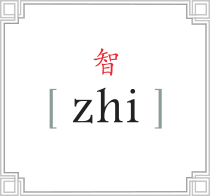Raw Puer: Kun Lu Shan 100-300yr 2014 - LIMITED!!
The Kun Lu Shan Raw Puer Tea Cake was made of tealeaves harvested from 100-300 year-old ancient arbor tea trees in late March 2014 in Ku Lu Shan Mountain.
Kunlushan Mountain, a part of the extension of Wuliangshan Mountains, belonging to Kuanhong village near Pu'erh city in the Yunnan province. At an elevation between 1410 and 2271 meters above sea level, the main body of Kunlushan Mountain extends for more than 10 kilometers from the north to the south and several kilometers from the east to the west.
Kunlushan Mountain is a beautiful landscape punctuated by large thickets of trees. The ancient tea gardens of this region are located amongst two villages: Fengyang village and Baxiang village. These ancient tea gardens are believed to be part of the royal tea gardens during the Qing Dynasty and is now praised as "the museum of tea trees." The third oldest recorded ancient tea tree grows here. It is about 25 meters in height and 2.53 meters in diameter and is the biggest human cultivated tea tree ever found.
There is a widespread misunderstanding that raw Puer can only be drunk after at least 5-10 years aging. In fact, raw Puer of good quality especially the ones made of tealeaves harvested from old or ancient arbor tea trees such as the Kunlushan raw Puer cake is delicious even being enjoyed in current year. Of course, amazing changes can be found every several years proper if properly stored.
Call us at 512-220-3839 for rare Puer cakes and bricks.
AKA Puer, Puerh
Hint: Shorter steep time for more sweetness.
Preparation Methods:
Gaiwan or Yi Xing Pot: (recommended)
Put about 5g or 2 tsp into heated vessel;
Pour 200 degree water into vessel. Brew for 20 seconds for the first brewing, 10 for second, add about five seconds for each subsequent brewing.
Western Style:
One heaping tsp per 12 oz cup, or one Tbsp per 24 oz pot
205 degree water
Steep for 2-3 minutes or to taste. Should be steeped multiple times
Flavor/taste note: An intense, long lasting, exotic and flowery aroma with lingering tropical fruit notes. The flavor has bittersweet and fruity complements with a semi-dry start and mouth-watering finish.
Basic Steeping Tips
- Use filtered or spring water, whenever possible
- Don’t overboil water
- Remove leaves after recommended time (adjust to taste)
- If you want stronger tea, use more leaves instead of steeping for a longer time
Leaves can be resteeped many times resulting in various flavor differences. Don’t throw out those leaves until they have given it all up
Pu-er is one of the oldest types of tea in China with a history of over 1700 years, tracing back to the Eastern Han Dynasty. During its height of popularity, the tea was freely traded even used as money for the bartering of goods. Puer gets its name from the city of Puer in south-western China where the trade for Pu-erh was conducted. Not far from Puer are the areas of Xishuangbanna and Simou, where cultivation and processing of the tea is carried out today.
Unlike other teas, the processing of puer is still a bit mysterious in the West. In the past, trespassers mistaken as spies on Puer tea farms were known to be killed. To this day, the secret of processing Puer remains guarded and it is only in Yunnan, China where genuine Puer tea can be produced. The most basic processing methods are indoor withering, a quick wok fired heat to kill a bitter enzyme, rolling (to break up some cellular structures to enhance flavor), sun drying, steam, compress, finally drying.
Puer tea is well-known for its ability to undergo a post-fermentation process designed for further aging, similar to wine. The aging process allows the tea to develop added complexity in character. With active microbes living within the tea, Puer evolves with each passing year. This is the most fermented tea in China. It is traditionally compressed and packed into tea cakes or bricks to age, which originated from the natural aging process that happened in the storerooms of tea drinkers and merchants, as well as on horseback caravans on the Silk Road. This method eased horseback transportation and reduced the damage to the tea.






